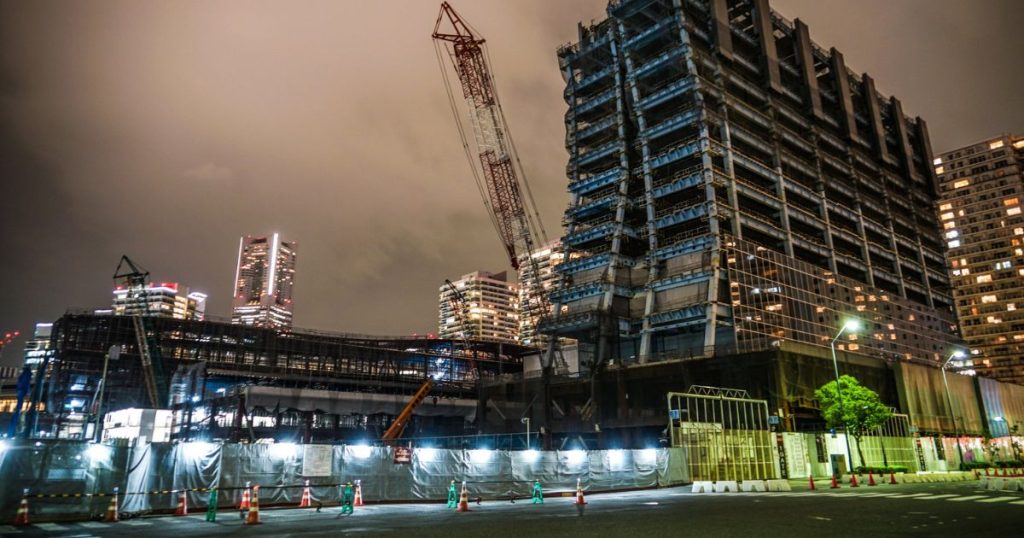With construction site theft costing the UK industry £800 million annually, mastering construction site security isn’t just an option – it’s a necessity.
Understanding the Scope of Construction Site Security
The UK construction industry faces unprecedented security challenges, with recent statistics showing a 32% increase in site-related crimes since 2020. Beyond the direct financial impact of theft, which amounts to approximately £800 million per year, construction sites frequently encounter issues such as vandalism, trespassing, and unauthorized access. Recent reports indicate that tool theft alone affects 98% of construction professionals during their careers, highlighting the widespread nature of these security challenges. Equipment theft particularly targets high-value machinery, with excavators and generators among the most commonly stolen items. These incidents not only result in immediate financial losses but also cause significant project delays, increased insurance premiums, and potential safety risks for workers.
Essential Physical Security Measures
Perimeter Security and Access Control
- Install robust perimeter fencing of at least 2.4 metres in height, preferably using anti-climb mesh or palisade fencing
- Implement secure entry points with heavy-duty gates and industrial-grade locks
- Establish a single point of entry where possible to better control site access
- Install adequate lighting around the perimeter, particularly at entry points and vulnerable areas
- Use physical barriers such as concrete blocks or water-filled barriers to prevent vehicle ram-raids
- Consider installing anti-climb devices on fencing and nearby structures
On-Site Security Personnel
Professional security guards remain a cornerstone of effective site protection, providing an active deterrent and immediate response capability. Studies show that sites with manned security experience up to 75% fewer security incidents compared to those without. Modern security personnel roles extend beyond traditional guarding to include monitoring technological systems, conducting regular patrols, managing access control, and maintaining security records. The most effective approach combines static guards at key points with mobile patrols, especially during vulnerable overnight periods.
Technology-Driven Security Solutions
Advanced Surveillance Systems
Modern surveillance technology has revolutionised construction site security. High-definition CCTV systems with night vision capabilities provide 24/7 monitoring, while AI-powered analytics can detect unusual activity and trigger immediate alerts. Cloud-based surveillance systems enable real-time monitoring from any location, with many systems now offering facial recognition and automatic number plate recognition (ANPR) capabilities. The latest statistics indicate that sites implementing comprehensive CCTV systems report a reduction in theft incidents by up to 90%.
Access Control Technology
- Biometric access systems using fingerprint or facial recognition
- RFID-enabled key cards and readers
- Digital keypads with regularly updated access codes
- Mobile app-based access management systems
- Time-limited access permissions for temporary workers
- Integration with workforce management systems for automated attendance tracking
Smart Security Integration
IoT and Connected Devices
The Internet of Things (IoT) has transformed construction site security through interconnected smart devices and sensors. These systems can track equipment location, monitor environmental conditions, and detect unauthorized movement. GPS tracking devices embedded in valuable equipment enable real-time location monitoring and quick recovery of stolen items. Smart sensors can detect changes in temperature, motion, or vibration, triggering immediate alerts to security personnel.
Remote Monitoring and Management
- 24/7 remote monitoring centres with trained security professionals
- Real-time alert systems for unauthorized access or suspicious activity
- Mobile app integration for site managers to monitor security feeds
- Automated incident reporting and documentation
- Environmental monitoring for fire, flood, or other hazards
Security Risk Assessment and Management
Identifying Vulnerabilities
Regular security assessments are crucial for maintaining effective site protection. Professional risk assessments should evaluate physical security measures, technological systems, and procedural controls. Key considerations include site location, value of materials and equipment stored, local crime rates, and specific project requirements. Recent industry data shows that sites conducting monthly security audits experience 45% fewer security incidents than those with less frequent assessments.
Developing Response Protocols
- Create clear emergency response procedures for different security scenarios
- Establish communication chains for incident reporting
- Develop evacuation plans and muster points
- Maintain up-to-date contact lists for key personnel and emergency services
- Regular testing and updating of security protocols
- Staff training on security procedures and incident response
Legal Compliance and Insurance Considerations
Construction sites must comply with various UK regulations regarding security, including the Construction (Design and Management) Regulations 2015 and the Security Industry Authority (SIA) requirements for security personnel. Adequate security measures can significantly impact insurance premiums, with many insurers offering discounts of up to 25% for sites with comprehensive security systems. It’s essential to maintain detailed security records and incident logs to support insurance claims and demonstrate regulatory compliance.
Future-Proofing Your Site Security
The future of construction site security lies in innovative technologies and integrated solutions. Emerging trends include drone surveillance systems, AI-powered predictive security analytics, and blockchain-based access management. Investment in future-proof security solutions should focus on scalable, upgradeable systems that can adapt to evolving threats and technological advances. Industry experts predict that by 2025, over 75% of construction sites will incorporate AI-driven security solutions.
Conclusion: Building a Comprehensive Security Strategy
Effective construction site security requires a multi-layered approach combining physical measures, technology solutions, and well-trained personnel. By implementing comprehensive security strategies, construction companies can significantly reduce theft, vandalism, and unauthorized access while ensuring regulatory compliance and protecting valuable assets. Regular assessment and updating of security measures, combined with investment in emerging technologies, will help maintain robust protection against evolving security threats in the construction industry.
FAQ
What is the biggest safety issue on a construction site?
Construction workers engage in many activities that may expose them to serious hazards, such as falling from rooftops, unguarded machinery, being struck by heavy construction equipment, electrocutions, silica dust, and asbestos.
How to check site security?
Open a web page. To check a site’s security, to the left of the web address, check the security status symbol: Default (Secure) Info or Not secure.
Sources
[1] https://www.workyard.com/construction-management/construction-site-security
[2] https://getsafeandsound.com/blog/types-of-construction-security/
[3] https://usassure.com/resources/articles/7-steps-to-securing-construction-job-sites


Leave a Reply